I am all for increasing performance on Linux games, and KDE developer Martin Gräßlin does have some interesting thoughts, but I disagree with a lot of it.
What he's saying sounds nice, and I'm sure he means well, but we are talking about Linux on the desktop here. Stuff like this may be good for SteamOS, but not desktop Linux.
He goes into more detail about it too and I won't quote all of it, but he summed up what would happen:
In my library of 535 Linux supported games, maybe around five or so don't work with Alt+Tab, but all work if you bring up something like the Steam Overlay to make it work again. My point is that you can pry Alt+Tab away from my cold dead fingers, especially since I am on a single monitor again. I don't think having a bunch of extra sessions around will really help all that much, considering the real marginal performance changes you get from it (I've tried it before, it wasn't worth it).
You would lose mumble, teamspeak, game overlays, and possibly more with this approach for what? A marginal performance gain?
What if you are using more than one monitor? It makes it all a bit pointless then doesn't it? Since the desktop will still be running on that monitor. How will it interfere or work with that?
It currently works mostly fine in both Windows and Linux, and I think something like this would make it even harder for people to switch away from Windows.
Personally, I see far too many issues with taking the game right out of the desktop session. I would prefer it if people worked out a way to increase performance for fullscreen games that a ran in desktop mode, rather than trying to completely re-do how it works. I mean, the whole point of the games being ran from the desktop is to integrate it all together isn't it? It sounds like a step forwards, but two steps backwards to me.
I think we can all agree it's good that people are thinking about ways to improve Linux gaming though.
QuoteSo what can we do? I thought about this and propose that we change gaming completely on Linux: remove the windowing system! Games should talk to kernel mode settings directly, games should interact with libinput directly. Let’s remove everything in between, we don’t need it, it only can worsen the gaming experience.
What he's saying sounds nice, and I'm sure he means well, but we are talking about Linux on the desktop here. Stuff like this may be good for SteamOS, but not desktop Linux.
He goes into more detail about it too and I won't quote all of it, but he summed up what would happen:
QuoteWhen a fullscreen game starts, it can create a “sub-session” on a new virtual terminal and become the logind- session controller for that session. This would allow the game to open the device files for rendering and for input just like a Wayland compositor does. Rendering could be done through EGL on top of DRM/GBM just like a Wayland compositor. The game would have full control over rendering, there is no desktop environment to slow it down any more. And it would have control over mode setting. Need a different resolution? No problem, just set it. On a desktop environment that’s always problematic (terrible on X11, better on Wayland). For games in windowed mode nothing should be changed, those should stay on the desktop environment.
Of course this would remove all interaction with the desktop environment. This is something which needs to be considered, like how to get Mumble to work in such a setup? Maybe the game could launch its own Wayland server?
That breaks Alt+Tab! Well not really. For one on X11 at least games often grab the keyboard, so Alt+Tab won’t work anyway. And of course one can still switch with ctrl+alt+f1 to the running session. Games should also have a common way to achieve this in my opinion.
In my library of 535 Linux supported games, maybe around five or so don't work with Alt+Tab, but all work if you bring up something like the Steam Overlay to make it work again. My point is that you can pry Alt+Tab away from my cold dead fingers, especially since I am on a single monitor again. I don't think having a bunch of extra sessions around will really help all that much, considering the real marginal performance changes you get from it (I've tried it before, it wasn't worth it).
You would lose mumble, teamspeak, game overlays, and possibly more with this approach for what? A marginal performance gain?
What if you are using more than one monitor? It makes it all a bit pointless then doesn't it? Since the desktop will still be running on that monitor. How will it interfere or work with that?
It currently works mostly fine in both Windows and Linux, and I think something like this would make it even harder for people to switch away from Windows.
Personally, I see far too many issues with taking the game right out of the desktop session. I would prefer it if people worked out a way to increase performance for fullscreen games that a ran in desktop mode, rather than trying to completely re-do how it works. I mean, the whole point of the games being ran from the desktop is to integrate it all together isn't it? It sounds like a step forwards, but two steps backwards to me.
I think we can all agree it's good that people are thinking about ways to improve Linux gaming though.
Some you may have missed, popular articles from the last month:
All posts need to follow our rules. Please hit the Report Flag icon on any post that breaks the rules or contains illegal / harmful content. Readers can also email us for any issues or concerns.
No thanks. Sounds like a very bad idea. I frequently alt-tab and shift between workspaces using ctrl+alt+arrow.
I do this to:
Change relative volumes on my music player vs game.
Change track or que a new playlist.
To browse the net ( GOL of course ) whilst I wait for a map/level to download or when im sat in a que for a round to end ( upto 5 - 10 mins sometimes if your playing a last man standing or last zombie to kill type scenario )
toggle steam downloads or check on that web browser download
To mute chromium audio which stops the volume on HTML MOTD ads ;)
Screenshots, sometimes I want to quick upload to my profile.
Change compositor values.
There are many more that other people probably need like webcam & VOIP stuff.. perhaps checking phone messages via KDE's very own andriod integration app ?!
Outside of that, running windowed mode is usually a great way to help Unity games run custom multimonitor resolutions on Linux where by we are not greatly supported.
Overall, SteamOS covers these bases if someone just wants a TV box. But lets just keep the desktop the desktop or we are going to have inevitable fragmentation when KDE devs go full Gnomenuts and force other devs into making a new fork of wayland/xwayland.
Besides .. valve are fully committed to the x system, so how would this work with those games without using a go between which effectively reduces performance.
Well .. its an idea all right :dizzy:
Last edited by on 11 Dec 2015 at 11:13 am UTC
I do this to:
Change relative volumes on my music player vs game.
Change track or que a new playlist.
To browse the net ( GOL of course ) whilst I wait for a map/level to download or when im sat in a que for a round to end ( upto 5 - 10 mins sometimes if your playing a last man standing or last zombie to kill type scenario )
toggle steam downloads or check on that web browser download
To mute chromium audio which stops the volume on HTML MOTD ads ;)
Screenshots, sometimes I want to quick upload to my profile.
Change compositor values.
There are many more that other people probably need like webcam & VOIP stuff.. perhaps checking phone messages via KDE's very own andriod integration app ?!
Outside of that, running windowed mode is usually a great way to help Unity games run custom multimonitor resolutions on Linux where by we are not greatly supported.
Overall, SteamOS covers these bases if someone just wants a TV box. But lets just keep the desktop the desktop or we are going to have inevitable fragmentation when KDE devs go full Gnomenuts and force other devs into making a new fork of wayland/xwayland.
Besides .. valve are fully committed to the x system, so how would this work with those games without using a go between which effectively reduces performance.
Well .. its an idea all right :dizzy:
Last edited by on 11 Dec 2015 at 11:13 am UTC
5 Likes
Compare to a true console like a PlayStation: while the game is running you can be sure it’s the exclusive user of the GPU.
We want to have a PlayStation like setup: game everything, everyone else nothing.Notice his choice of comparisons? His comparisons and theories, do indeed make a lot more sense when we're talking about Steam Machines. Not sure he is aware, but parts of his ideas are already implemented in SteamOS (separate tty/session).
If/when SteamOS finally implements Wayland/EGL you would effectively have something close to what he describes. So interesting talks, but he should work with Valve not KDE on these ideas.
4 Likes
Quoting: HoriAlso, can't Valve just develop their own DE and make it very lightweight and make interaction between the game and the kernel as direct as possible (still via the DE, but with less bloat) ?They already have their own custom compositor that is used on SteamOS.
Quoting: HoriBecause the only place where this makes at least some kind of sense is a TV box. I know they have Big Picture but AFAIK it still runs on GNOME. And having their own DE has other benefits too, as they will have full control over it's development, and can make it as gaming-friendly as possible.Incorrect. Gnome does not run by default and it is in its own tty (tty7) while SteamOS runs on a lightweight compositor in tty8.
Last edited by AsavarTzeth on 12 Dec 2015 at 1:44 pm UTC
0 Likes
Quoting: AsavarTzethNot sure he is aware,I think that’s the issue. Not insulting the guy on a personal level, but it does seem like a lot of devs have bottle vision when it comes to the big picture ( no pun ) they concentrate on one major aspect ( like wayland in this case ) and then start to forget about the thousands of other things that make up an individual desktop user experience.
Its just a bad idea imo, not in its distilled form but as a solution that fits the majority. everyone has them now and again.
If it gets fully implemented Il support whichever dev's or system that doesn’t use this unless it breaks zero things and doesn’t remove any functionality I have now. And for when I do want a console style PC gaming experience il just boot my steam machine.
Remember a lot of users moved from Windows to get away from the reduced desktop experience Microsoft delivered since windows 8. Being able to switch workspaces fast and without breakage is something windows users don’t have the luxury of and now were looking to remove that ?
Last edited by on 11 Dec 2015 at 11:25 am UTC
3 Likes
Quoting: mr-eggI think that’s the issue. Not insulting the guy but it does seem like a lot of devs have bottle vision when it comes to the big picture ( no pun ) they concentrate on one major aspect ( like wayland in this case ) and then start to forget about the thousands of other things that make up an individual desktop user experience.My thoughts exactly mr-egg. Could not have said it better myself.
1 Likes
I'm not going to dismiss something I don't understand full scope of. I think it's good that at least people are talking about doing something against the grain. Else we'll just stagnate.
What's the worst that would happen? It gets forked? If it progresses into something useful, maybe even Valve will use it down the line.
What's the worst that would happen? It gets forked? If it progresses into something useful, maybe even Valve will use it down the line.
4 Likes
I tried for a while to have all my files without read permission for others, and have my user 1001 just for gaming on tty9.
Specially useful in a single monitor, less so with multiple monitors (I cant have different tty on different monitors and go back to merge them when im not playing that i know of )
Sadly, of all the virtues of pulseaudio, multi user is not one of them, and i ended up giving up...
Specially useful in a single monitor, less so with multiple monitors (I cant have different tty on different monitors and go back to merge them when im not playing that i know of )
Sadly, of all the virtues of pulseaudio, multi user is not one of them, and i ended up giving up...
0 Likes
That would be a huge step backwards considered that SDL2 and Unity3d freed us from the no ALT+TAB misery of old fullscreen Linux games.
3 Likes
Quoting: hardpenguinThat would be a huge step backwards considered that SDL2 and Unity3d freed us from the no ALT+TAB misery of old fullscreen Linux games.Correct me if I remember this wrong, but SDL2 basically handles all fullscreen games like a borderless window, by default. This is one of the reasons we have so few alt+tab/workspace issues. I tend to hear a lot of Windows gamer/enthusiasts much prefer this setting. I can see why.
This is great when you are convincing switchers if you ask me.
Last edited by AsavarTzeth on 11 Dec 2015 at 11:48 am UTC
1 Likes
The time when games asked the X server to render some 3D graphics through GLX calls is long gone. Currently games communicate mostly directly to the hardware, through OpenGL libs and DRI. Desktop software interaction is only for set up – there is little to gain here.
Resolution changing? Yes, that is a problem, but has little to do with desktop performance and a lot to do with bugs in the games or engines. And it is IMHO mostly unnecessary anyway. Most people want to play in monitor's native resolution and the best games just don't change that, but adapt. And even is someone really, really want to play with lower resolution (note: I am Intel HD4600 user – if it would be worth for performance reasons I would know it), then there are ways to do that painlessly, but many games fail here. I guess most problems could be fixed by making the desktop environment or the launcher (like Steam) to fix what the games breaks (restore the original desktop resolution after game exits).
Resolution changing? Yes, that is a problem, but has little to do with desktop performance and a lot to do with bugs in the games or engines. And it is IMHO mostly unnecessary anyway. Most people want to play in monitor's native resolution and the best games just don't change that, but adapt. And even is someone really, really want to play with lower resolution (note: I am Intel HD4600 user – if it would be worth for performance reasons I would know it), then there are ways to do that painlessly, but many games fail here. I guess most problems could be fixed by making the desktop environment or the launcher (like Steam) to fix what the games breaks (restore the original desktop resolution after game exits).
0 Likes
And this is why I run my two-monitor system with two separate X screens, and a WM without 3D compositor. And then I frequently set games to windowed mode, but in monitor-resolution and remove their decoration.
Because I do not want games grabbing my keys. I do not want games trying to be smarter then me and doing crap to hinder me from using my IRC client, or browser, or what-have-you on my second monitor. I reject all of his premises.
Moreover this "then let's integrate TeamSpeak into the games" he said in the comments, that's just pure lunacy. What about people who want something else then TeamSpeak? What about thousands of older games? What about keeping TeamSpeak up-to-date?
Because I do not want games grabbing my keys. I do not want games trying to be smarter then me and doing crap to hinder me from using my IRC client, or browser, or what-have-you on my second monitor. I reject all of his premises.
Moreover this "then let's integrate TeamSpeak into the games" he said in the comments, that's just pure lunacy. What about people who want something else then TeamSpeak? What about thousands of older games? What about keeping TeamSpeak up-to-date?
4 Likes
I wonder something, for how long have you commenters been on the internet (no insult, a rhetorical question)? This is a blog post is to spark ideas out of the people that are interested so a discussion can start, that could potentially change how things work or even add a mechanism that wasn't intent for what it first was.
My point here is that as long as you just deny an idea because you do not like it, you stagnate the community. These are the few moments where you have to be optimistic to how things could work (in theory), any idea can help the spark of innovation happen.
My thought of this was very positive because I can see the possibilities of how this could be used as a feature, such as multiple modes (for multiple monitors, as an example). On one hand you have the desktop as usual and the other a live log of some sort or maybe just something simple as a volume slider that directly controls the volumes when needed (for broadcasters). It could be handy if implemented right but you need to be willing to let innovation spark to make it happen and not deny because some features are going to be lost.
And if that is the case (features being lost), how can we think of gaining those features back in other ways then.
A greater example is Mantle, it was such a nice thing as a concept and even pushed DX12 to happen. The concept failed but the code did not, which gave others a potential that it could happen in another way (Vulkan), a discussion began and thus agreed to make it happen.
My point being, anything you say and how you say it can bring a spark of innovation, otherwise what is the point of having a discussion? <--- again, rhetorical
Last edited by Sethox on 11 Dec 2015 at 12:22 pm UTC
My point here is that as long as you just deny an idea because you do not like it, you stagnate the community. These are the few moments where you have to be optimistic to how things could work (in theory), any idea can help the spark of innovation happen.
My thought of this was very positive because I can see the possibilities of how this could be used as a feature, such as multiple modes (for multiple monitors, as an example). On one hand you have the desktop as usual and the other a live log of some sort or maybe just something simple as a volume slider that directly controls the volumes when needed (for broadcasters). It could be handy if implemented right but you need to be willing to let innovation spark to make it happen and not deny because some features are going to be lost.
And if that is the case (features being lost), how can we think of gaining those features back in other ways then.
A greater example is Mantle, it was such a nice thing as a concept and even pushed DX12 to happen. The concept failed but the code did not, which gave others a potential that it could happen in another way (Vulkan), a discussion began and thus agreed to make it happen.
My point being, anything you say and how you say it can bring a spark of innovation, otherwise what is the point of having a discussion? <--- again, rhetorical
Last edited by Sethox on 11 Dec 2015 at 12:22 pm UTC
1 Likes
Maybe it's a good solution for something like a Steam Machine. After all that is the console approach - cut down all the OS clutter to improve performance. After all, don't forget that Valve's concern is with Steam OS, the rest of the distros just happen to benefit from their effort. If they could boost game performance on Steam OS they'd do it in a heartbeat regardless how and if that affects Ubuntu or Fedora.
0 Likes
Somewhere in one of the quotes he says: "Maybe the game could launch its own Wayland server?". This could fix your alt+tab, mumble, multi-monitor .... fears?
0 Likes
Quoting: SethoxI wonder something, for how long have you commenters been on the internet (no insult, a rhetorical question)? This is a blog post is to spark ideas out of the people that are interested so a discussion can start, that could potentially change how things work or even add a mechanism that wasn't intent for what it first was.No this is how debates happen, not everyone is on the side of liking the idea. Just because some of us don't like the idea, and give reasons why, doesn't suddenly make us stagnate anything.
My point here is that as long as you just deny an idea because you do not like it, you stagnate the community. These are the few moments where you have to be optimistic to how things could work (in theory), any idea can help the spark of innovation happen.
Quoting: SethoxA greater example is Mantle, it was such a nice thing as a concept and even pushed DX12 to happen. The concept failed but the code did not, which gave others a potential that it could happen in another way (Vulkan), a discussion began and thus agreed to make it happen.Mantle didn't change the entire tried and tested user experience.
2 Likes
No, thanks. I don't want my Alt-Tab, Ctrl-Alt-Arrow and Super-S broken again.
In fact I wish Wayland will finally fix the "fullscreen program grabs ALL the keyboard keys and you can't do nothing to stop it", it's not just a serious usability issue but a security one as well.
In fact I wish Wayland will finally fix the "fullscreen program grabs ALL the keyboard keys and you can't do nothing to stop it", it's not just a serious usability issue but a security one as well.
2 Likes
Quoting: SethoxMy point here is that as long as you just deny an idea because you do not like itI deny ideas and proposed solutions that destroy features I depend on. As is, this would completely remove my ability to switch to my second monitor and interact with IRC during a game. It would remove my ability to use something other than TeamSpeak during a game.
Quoting: Sethoxyou stagnate the communityOn the flipside, you can also innovate a community to death, by introducing poorly thought out solutions every other minute.
Quoting: SethoxMy thought of this was very positiveYes, and my thoughts were very negative, because I see how it interacts with my use case in a way that's not positive. And how "integrate TeamSpeak into games" is obviously the wrong thing to do, for various reason. See my comment above.
Quoting: Sethoxhow this could be used as a feature, such as multiple modes (for multiple monitors, as an example). On one hand you have the desktop as usual and the other a live log of some sort or maybe just something simple as a volume slider that directly controls the volumes when needed (for broadcasters).Yeah... except that the proposed solution wouldn't allow for this. It wouldn't work at all for multi-monitor setups. This is exactly my issue.
Quoting: SethoxAnd if that is the case (features being lost), how can we think of gaining those features back in other ways then.Yes, but you need to think about these feature before proposing a solution as the ultimative goal. And then not dismissing lost features with a flippant "I think your usecase doesn’t fit".
1 Likes
This is the worst idea ever. For what, to gain a couple of FPS, at best?
While we are losing our time speaking of this nonsense, Windows people are enjoying their fully functional and faster games...
While we are losing our time speaking of this nonsense, Windows people are enjoying their fully functional and faster games...
0 Likes
Quoting: AsavarTzethYes, that is correct :)Quoting: hardpenguinThat would be a huge step backwards considered that SDL2 and Unity3d freed us from the no ALT+TAB misery of old fullscreen Linux games.Correct me if I remember this wrong, but SDL2 basically handles all fullscreen games like a borderless window, by default. This is one of the reasons we have so few alt+tab/workspace issues. I tend to hear a lot of Windows gamer/enthusiasts much prefer this setting. I can see why.
This is great when you are convincing switchers if you ask me.
0 Likes
Quoting: NouserNo, thanks. I don't want my Alt-Tab, Ctrl-Alt-Arrow and Super-S broken again.This! I hate that the volume buttons on my laptop and keyboard don't work in most full screen Linux games already, and wacky stuff like the proposals in the article would only make it that much worse.
In fact I wish Wayland will finally fix the "fullscreen program grabs ALL the keyboard keys and you can't do nothing to stop it", it's not just a serious usability issue but a security one as well.
If you just disable compositing, games run great in Linux. The only problem is lack of resolution switching support, which kills me in games like FTL and Gemini Rue. I've become too familiar with using xrandr! It would be better if games or Linux could just do a bilinear scale to my native resolution though, which is what the monitor ends up doing anyway.
0 Likes
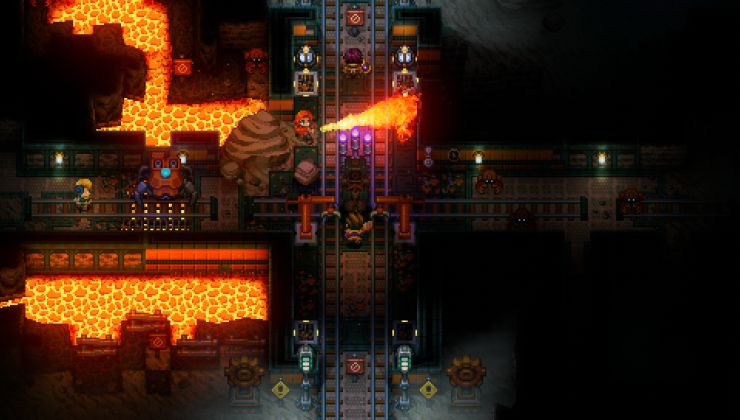
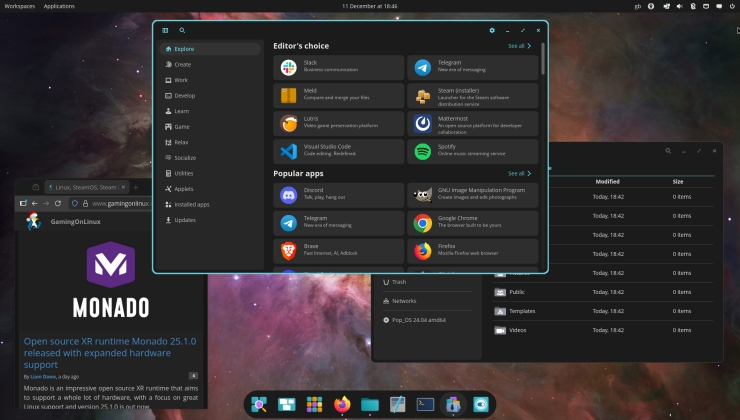

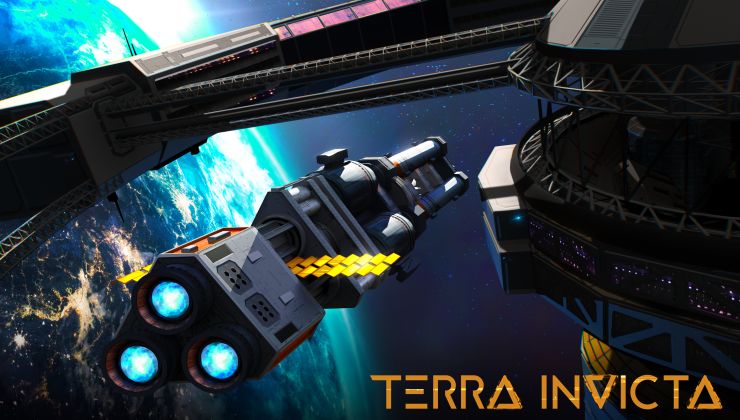








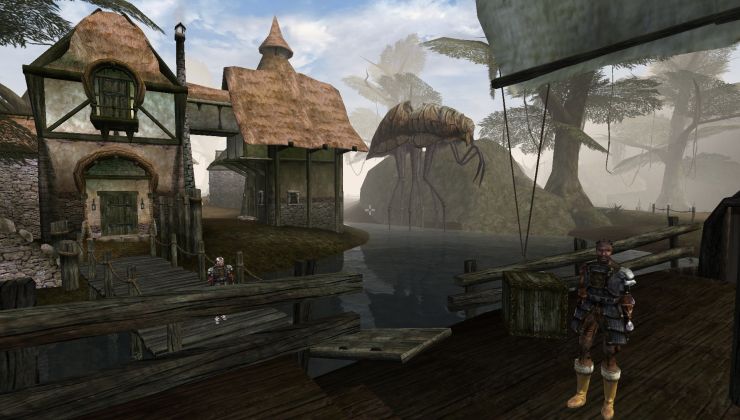 How to setup OpenMW for modern Morrowind on Linux / SteamOS and Steam Deck
How to setup OpenMW for modern Morrowind on Linux / SteamOS and Steam Deck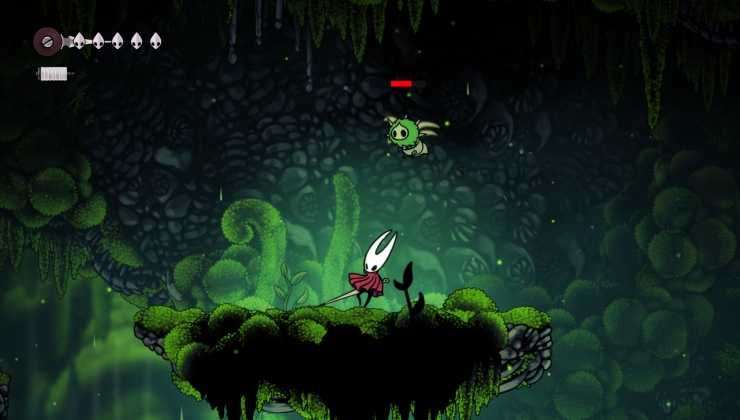 How to install Hollow Knight: Silksong mods on Linux, SteamOS and Steam Deck
How to install Hollow Knight: Silksong mods on Linux, SteamOS and Steam Deck